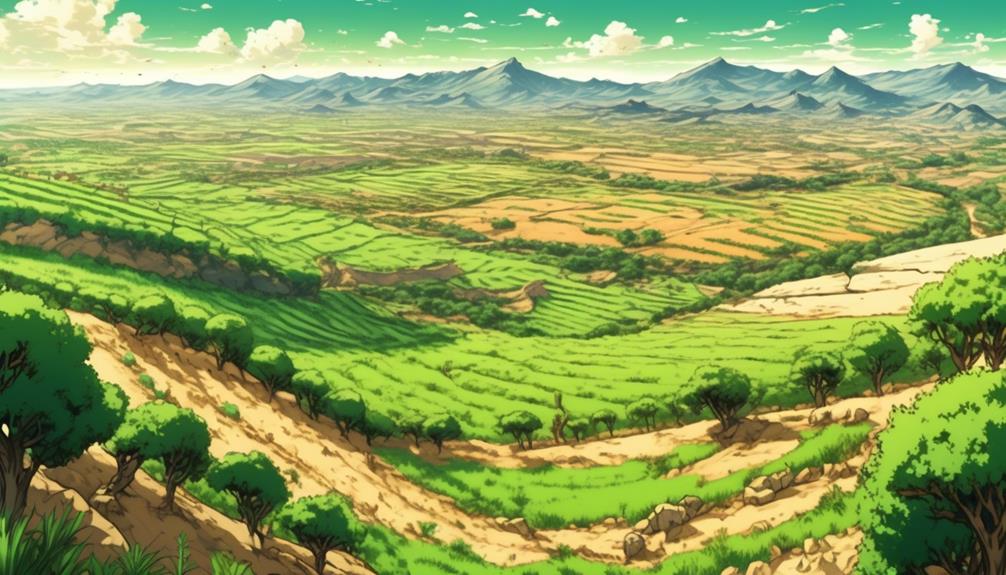They say that necessity is the mother of invention, and Spain’s battle against desertification is a testament to this adage.
In the face of a crisis that threatens not only its agricultural productivity but also its natural resources and communities, Spain has taken bold and innovative steps to transform barren wastelands into thriving farmland.
But the journey is far from over, and the question remains: how has Spain tackled this formidable challenge, and what are the potential solutions that hold the key to a sustainable future?
Desertification in Spain
- Spain is facing a desertification crisis, with 31.5% of the country already affected and 18% at high risk of irreversible desertification.
- Historical deforestation and land loss, including the loss of ancient oak forests and intensive industrial agriculture, have exacerbated the problem.
- Catalonia has implemented a successful restoration project since 2003, using cost-effective techniques to restore dunes and combat soil salination.
- The restoration efforts have led to increased biodiversity, the growth of endemic and rare plant species, and the creation of natural food forests, improving the resilience of Spain’s barren wastelands.
Spain’s Desertification Crisis
Spain is currently facing a severe desertification crisis. 31.5% of the country is already affected, with 18% at high risk of irreversible desertification. The causes of desertification in Spain are primarily attributed to rising temperatures and a reduction in precipitation, leading to severe droughts.
Historical deforestation and land loss have also contributed to the problem. The ancient oak forests of the Iberian Peninsula were deforested for timber use and overgrazing. Additionally, intensive industrial agriculture has further eroded the soil, decreasing food security and negatively affecting the climate and biodiversity.
To combat desertification, Spain has implemented various solutions. Restoration efforts in Catalonia involve techniques like mulching down native sand dune grasses to create topsoil and using permaculture principles to capture and hold water. These efforts have been successful in increasing biodiversity and improving the lives of local communities.
It is important to note that the Altiplano region in Spain’s southeast, known as the ‘Breadbasket of Europe,’ is also at high risk of desertification due to unsustainable agricultural practices.
Historical Deforestation and Land Loss

The historical deforestation and land loss in Spain have significantly contributed to the country’s desertification crisis. Here are some key points to consider:
- The ancient oak forests of the Iberian Peninsula were deforested for timber use and overgrazing.
- Currently, 16 million hectares of land are used for intensive industrial agriculture, further eroding the soil.
- Land loss has decreased food security and negatively affected the climate and biodiversity.
- Spain’s semi-arid regions receive only 11 inches of rainfall per year.
- The loss of vegetation has led to the loss of natural barriers against coastal water intrusion.
These factors have had profound impacts on the climate and biodiversity of Spain. The destruction of forests and the expansion of agriculture have disrupted natural ecosystems, leading to a loss of habitat for many species.
Additionally, the loss of vegetation has reduced carbon sequestration, contributing to climate change. It’s crucial for Spain to address these historical issues and implement sustainable practices to restore the land and mitigate further desertification.
‘Did you know? The Great Dune of Pilat, located in southwestern France, is actually the result of desertification that began in the 18th century due to deforestation and overgrazing.’
Restoration Efforts in Catalonia
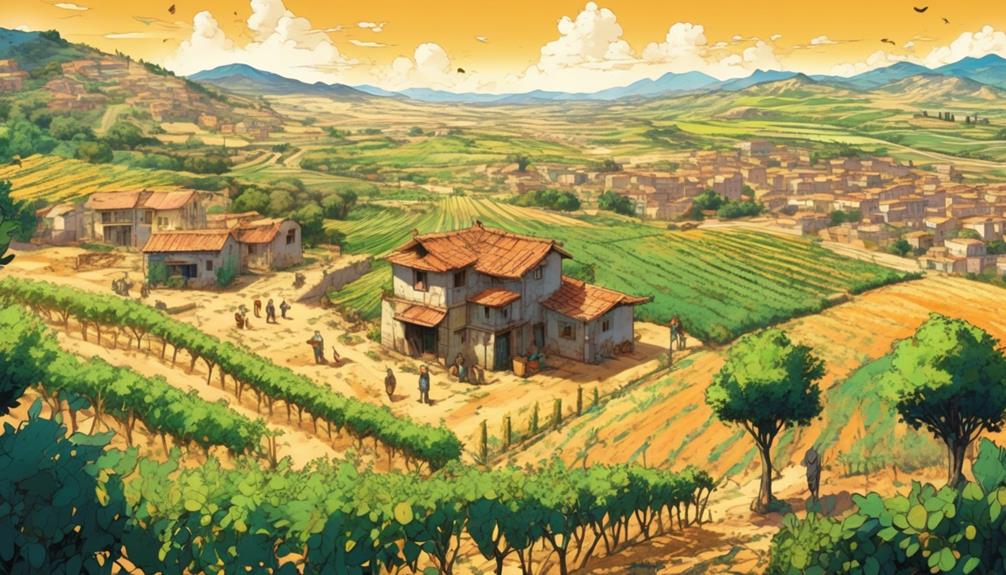
Restoration efforts in Catalonia have made significant progress in combating soil salination and land degradation caused by saltwater intrusion.
Catalonia, a northeastern coastal region, has been severely affected by these issues due to rising sea levels, storms, tides, droughts, and poor water resource management. To combat these challenges, a restoration project was initiated in 2003 near Barcelona airport and has since expanded countrywide.
One effective technique employed in the restoration project is the use of native sand dune grasses. These grasses have mulched down and degraded, creating topsoil in arid conditions.
Additionally, permaculture principles, such as capturing water with ditches and contours, have been implemented to restore dunes. As a result, vegetation and greenery are more abundant in areas where water is captured and held longer.
The impact on biodiversity in the restored areas has been remarkable.
Wildflowers, birds, sea turtles, and reptiles are thriving, contributing to a diverse ecosystem. Moreover, the expansion of the dune habitat has created a natural food forest with edible plants and trees.
Community involvement has played a crucial role in the success of the restoration efforts. Local residents have actively participated in the project, contributing their knowledge and skills. This sense of community ownership has fostered a deeper connection to the restored areas, enhancing their sustainability.
Did you know? The restoration efforts in Catalonia haven’t only improved the environment but also boosted tourism in the region. Visitors now come to witness the thriving biodiversity and enjoy the beauty of the restored landscapes.
Successful Restoration Techniques
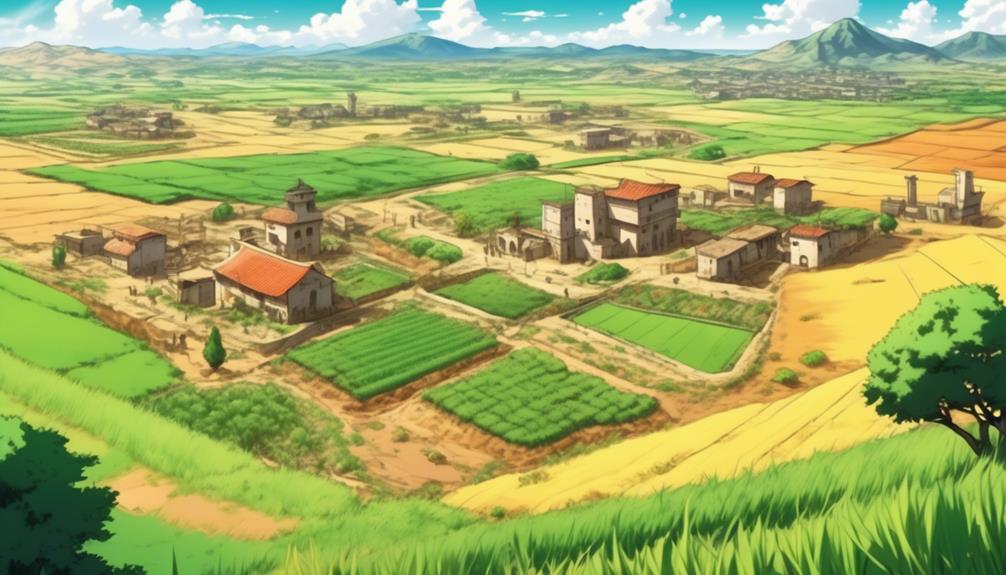
Native sand dune grasses have successfully mulched down and degraded, creating topsoil in arid conditions, as part of Spain’s restoration efforts. This technique, along with the implementation of permaculture principles, has played a crucial role in the successful restoration of barren wastelands.
Here are five successful restoration techniques being used in Spain:
- Capturing water with ditches and contours: By strategically designing the landscape to capture and retain water, vegetation and greenery thrive in these areas.
- Promoting biodiversity: Restored areas have seen an increase in the presence of wildflowers, birds, sea turtles, and reptiles, indicating a healthier ecosystem.
- Creation of a natural food forest: The expansion of dune habitats has led to the development of a natural food forest, with edible plants and trees providing sustenance.
- Improved soil quality: The mulching down of sand dune grasses has created topsoil, enhancing the fertility and resilience of the land.
- Enhanced ecosystem resilience: These restoration techniques have contributed to the overall resilience of the ecosystem, protecting against desertification and improving the long-term sustainability of the land.
Through the application of permaculture techniques and the restoration of natural habitats, Spain is successfully combating desertification and promoting ecosystem resilience.
Benefits of Restoration Efforts
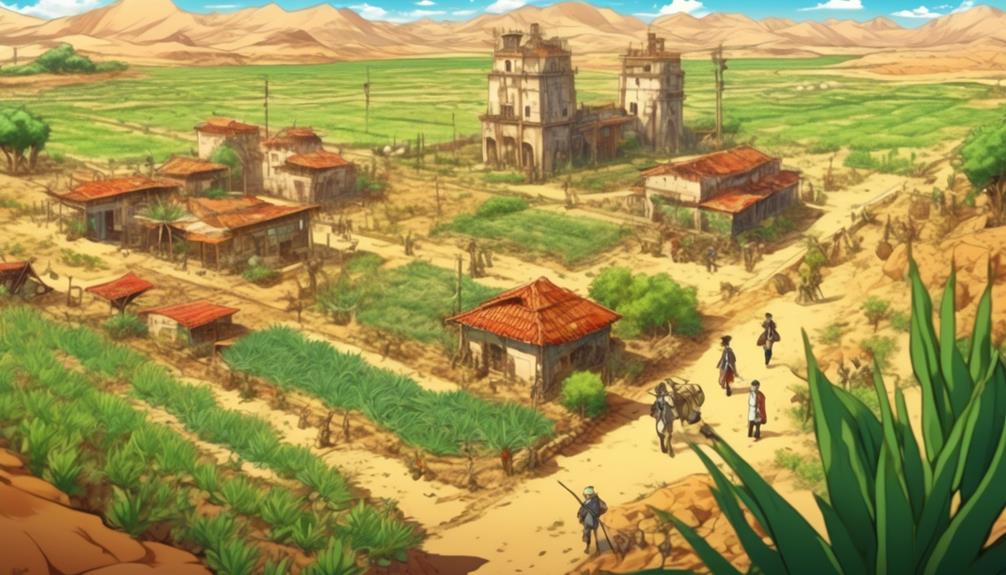
As a result of these successful restoration techniques, Spain has experienced a multitude of benefits from its efforts to combat desertification and restore barren wastelands.
One significant benefit is the promotion of green tourism.
The restoration projects have created new and vibrant ecosystems that attract tourists who are interested in experiencing the beauty and biodiversity of these restored areas. This influx of tourists has provided economic opportunities for local communities, including job creation in the tourism sector and increased revenue from accommodations, restaurants, and other related businesses.
Additionally, the restoration efforts have led to the revival of agricultural activities in the once-barren wastelands. The improved soil quality and availability of water have allowed farmers to cultivate crops and raise livestock, enhancing food security and generating income for the local economy.
Overall, the restoration efforts in Spain haven’t only mitigated desertification but also brought economic prosperity and a sense of belonging to the communities involved.
Spain’s restoration efforts have been so successful that the country has become a global leader in combating desertification and promoting sustainable land management practices.
Impact on Local Communities
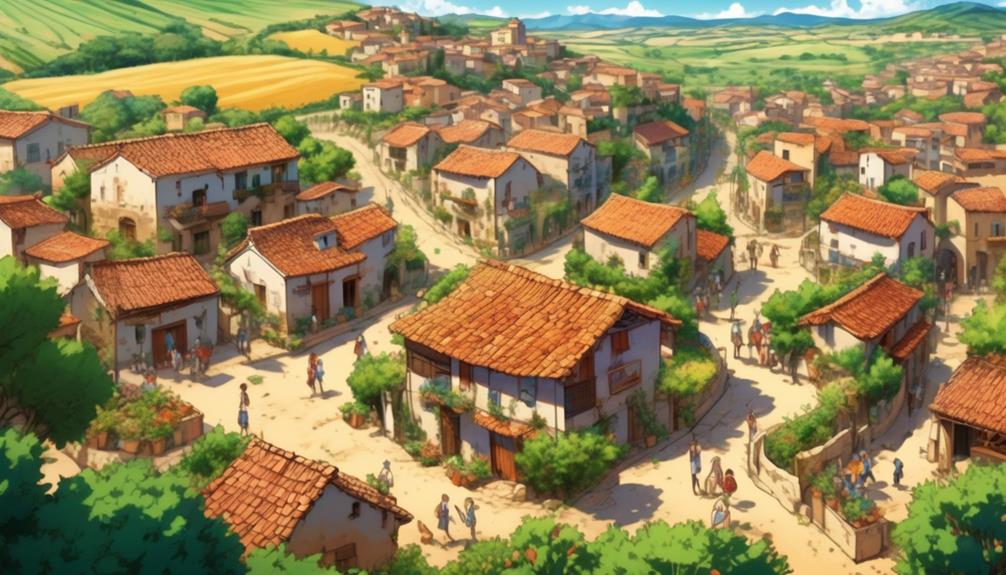
The impact of Spain’s restoration efforts on local communities has been profound, transforming their livelihoods and fostering a sense of resilience and connection to the land.
- Employment Opportunities: The restoration projects have created job opportunities for local residents, particularly in the field of ecological restoration and sustainable agriculture. This has provided a source of income and stability for community members.
- Community Engagement: The restoration efforts have encouraged active community participation and engagement. Local residents are involved in decision-making processes, contributing their knowledge and skills to the restoration projects. This has strengthened community ties and empowered individuals to take ownership of their environment.
- Improved Livelihoods: The restoration of barren wastelands into thriving farmland has increased agricultural productivity, ensuring food security and economic stability for local communities. This has reduced their dependence on external sources for food and resources.
- Sense of Belonging: The restoration projects have instilled a sense of pride and belonging among local communities. They’ve witnessed the transformation of their once-barren landscapes into vibrant ecosystems, reinforcing their connection to the land and their cultural heritage.
- Sustainable Future: The restoration efforts have paved the way for a more sustainable future for local communities. By employing regenerative practices, communities are able to protect and preserve their natural resources, ensuring their long-term availability and wellbeing.
‘Did you know? The restoration of the Guadarrama National Park in Spain has resulted in the recovery of the Iberian lynx population, a critically endangered species, providing hope for its future survival.’
The Future of Spain’s Farmland Transformation
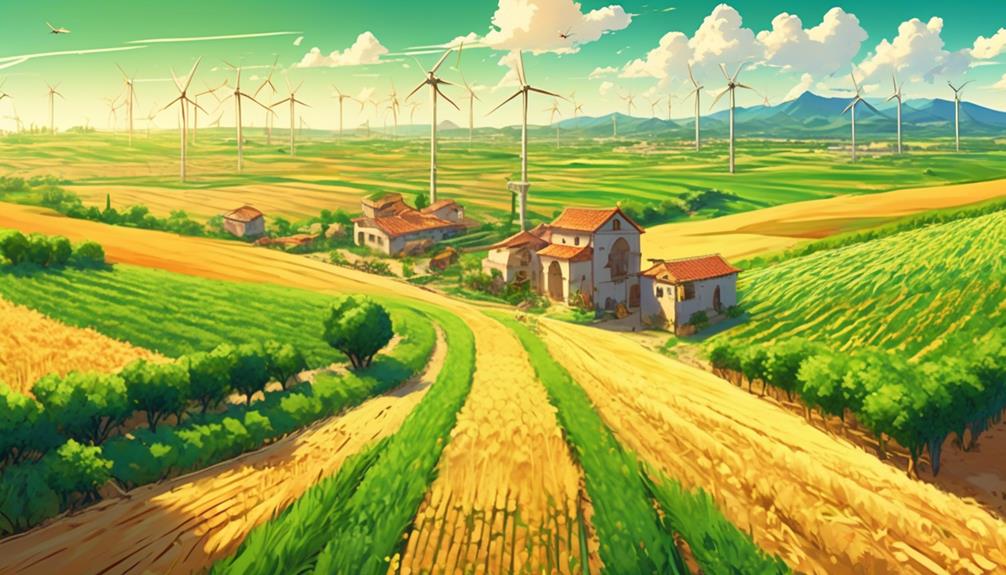
Spain’s farmland transformation is poised to shape a more sustainable and resilient future for the nation’s agricultural sector.
By implementing sustainable agriculture practices, Spain aims to combat desertification, improve soil quality, and increase biodiversity. This transformation not only benefits the environment but also has significant economic implications.
| Sustainable Agriculture Practices | Economic Implications of Farmland Transformation |
|---|---|
| Crop rotation and diversification | Increased crop yields and reduced reliance on chemical inputs |
| Agroforestry and reforestation | Improved water retention and carbon sequestration, potential for timber production |
| Conservation tillage and soil management | Reduced soil erosion, improved soil fertility, and moisture retention |
These sustainable practices not only contribute to the preservation of the environment but also enhance the agricultural sector’s productivity and profitability. Increased crop yields, improved soil health, and reduced input costs can lead to economic growth and food security.
Furthermore, the adoption of sustainable practices can attract investments in eco-friendly agriculture, creating job opportunities and fostering rural development. Spain’s farmland transformation shows the potential for a thriving agricultural sector that is both environmentally sustainable and economically prosperous.
Did You Know? Spain’s farmland transformation is part of a larger global movement towards sustainable agriculture, with countries around the world recognizing the importance of balancing food production with environmental stewardship.
Bold Restoration Efforts
In a stunning display of determination and innovation, Spain has taken on the daunting challenge of battling desertification head-on.
Through bold restoration efforts and the adoption of cost-effective techniques, the country has transformed barren wastelands into thriving farmland, enhancing biodiversity and improving the lives of local communities.
Spain’s resilience in the face of this crisis is truly commendable, proving that with determination and the right strategies, even the most desolate landscapes can flourish once again.
